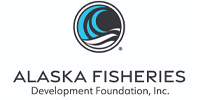Demand is increasing quickly for documentation of socially responsible practices on commercial fishing vessels in response to efforts to eradicate the use of slave, forced or child labor.
Buyers and the public are now asking U.S. seafood companies for credible and transparent documentation that the seafood purchased was not produced using these forms of labor, with particular concern regarding labor practices onboard commercial fishing vessels, due to their isolation at sea and the violations previously found on foreign vessels. However, using a one-size-fits-all approach to solve this global issue ironically could harm Alaska and other U.S. fishermen, especially the small boat fleet and fishing families.
Alaska is a world leader in environmental sustainability and social responsibility. The Alaska seafood industry represents over half of the commercial fishing landings in the U.S. and is harvested exclusively by U.S.-flagged vessels that are permitted and registered under U.S. federal or state of Alaska authorities. State managed fisheries occur within three miles of shore and federally managed fisheries occur within the 200-mile U.S. EEZ. The culture of the fishing industry values independence, freedom of choice, and fishing families. Fisheries in Alaska operate under a comprehensive suite of federal and state laws and regulations, in conjunction with enforcement, insurance requirements, and common industry practices, which create a fair and safe working environment for commercial fishermen.
With regards to enforcement, the U.S. Coast Guard (USCG) is the primary enforcement agency for commercial fishing vessel safety and conducts countless vessel inspections. In 2017, over 9,000 commercial fishing vessels were licensed to operate in Alaska. Over 8,500 (or 93%) of these vessels were under 59 feet in length, had crews of 5 people or less, and regularly returned to port in 10 days or less.
In the years 2014 to 2018, the USCG conducted 2,168 at‐sea inspections of commercial fishing vessels in state and federal waters off Alaska for safety and fisheries regulations and documented a 91.9% compliance rate. During this reporting period, the USCG also conducted over 9,000 dockside safety inspections of commercial fishing vessels operating in state and federal waters off Alaska.
In 2017, the Alaska Fisheries Development Foundation (AFDF) was awarded funds to document social responsibility in the Alaska commercial fisheries through the NOAA Saltonstall-Kennedy grant (NOAA Award NA17NMF4270234). AFDF partnered with the United Fishermen of Alaska (UFA) and others to document socially responsible practices onboard Alaska commercial fishing vessels in a series of documents.
For more information on this project, see the documents:
- Social Responsibility Onboard Commercial Fishing Vessels in Alaska – IN BRIEF, which provides a brief overview of the vessel classes, regulations and laws governing vessels used in commercial fishing and the common practices employed by the fishing industry to ensure a safe and fair working environment for commercial fishermen in Alaska;
- Social Responsibility Onboard Commercial Fishing Vessels in Alaska, which offers more context and detailed references;
- and Priority Human Rights Topics for Fair and Equitable Labor Practices Onboard Commercial Fishing Vessels in Alaska, which is a table providing an overview of the priority human rights topics addressed by practices onboard vessels in the Alaska commercial fishing industry.
Transparency, including frequent opportunity for third-eye witness to vessel practices, and clarity of jurisdiction in fisheries off Alaska, promote responsible practices onboard. Comprehensive federal and state laws and regulations, cooperatively enforced, in combination with insurance requirements and common industry practices, create a fair and safe working environment for commercial fishermen in Alaska. This combination of government oversight and business incentives to reduce risk ensures extremely low risk of egregious labor practices (such as forced, slave and child labor) for customers purchasing Alaska seafood throughout the supply chain.
This information can be provided to customers as validation that the Alaska commercial fishing fleet represents an extremely low-risk of egregious labor practices, particularly slave, forced, or child labor. This information can also be provided to other fishing regions in the U.S. to serve as a template for demonstrating low risk in other regions.

